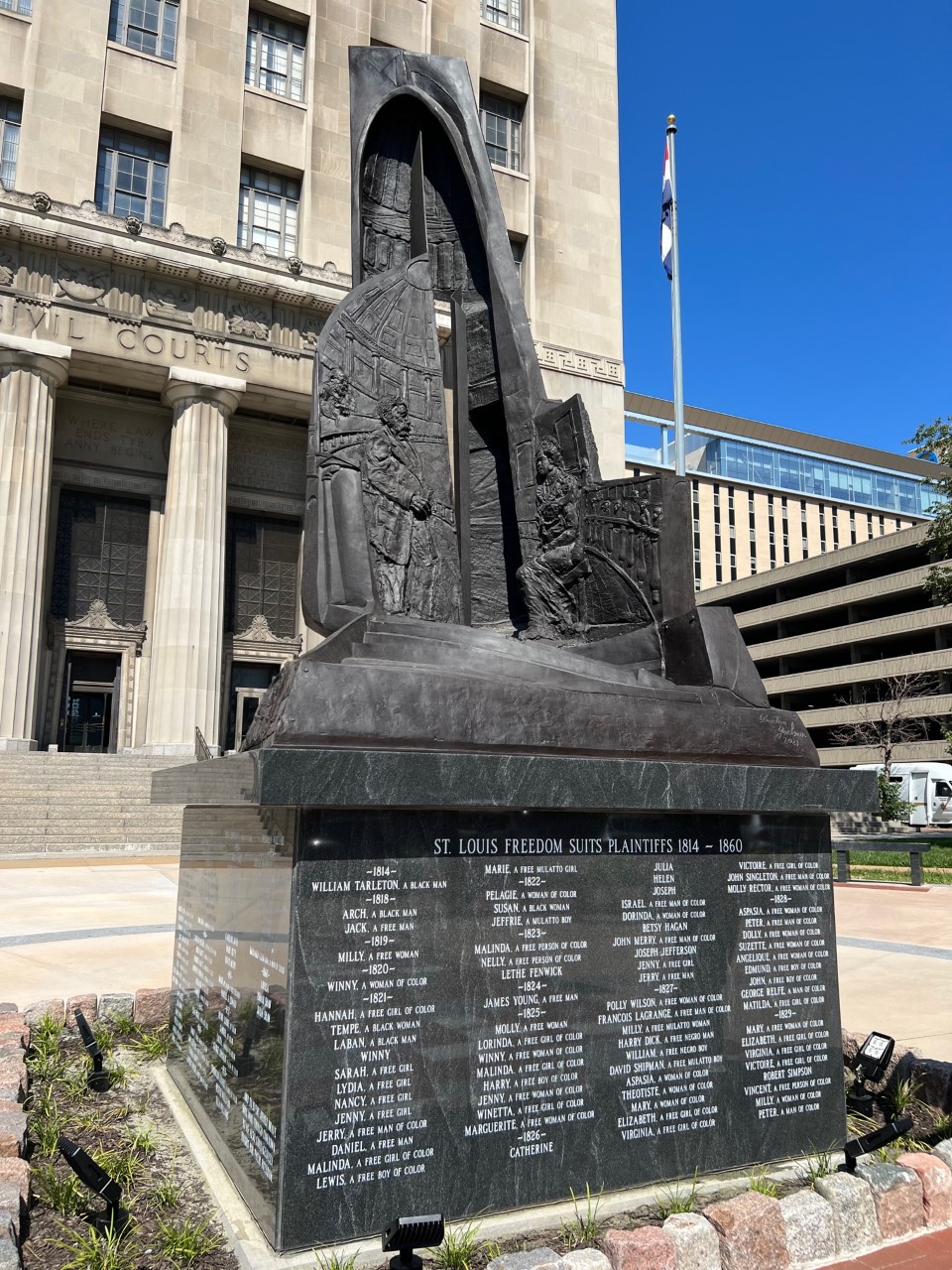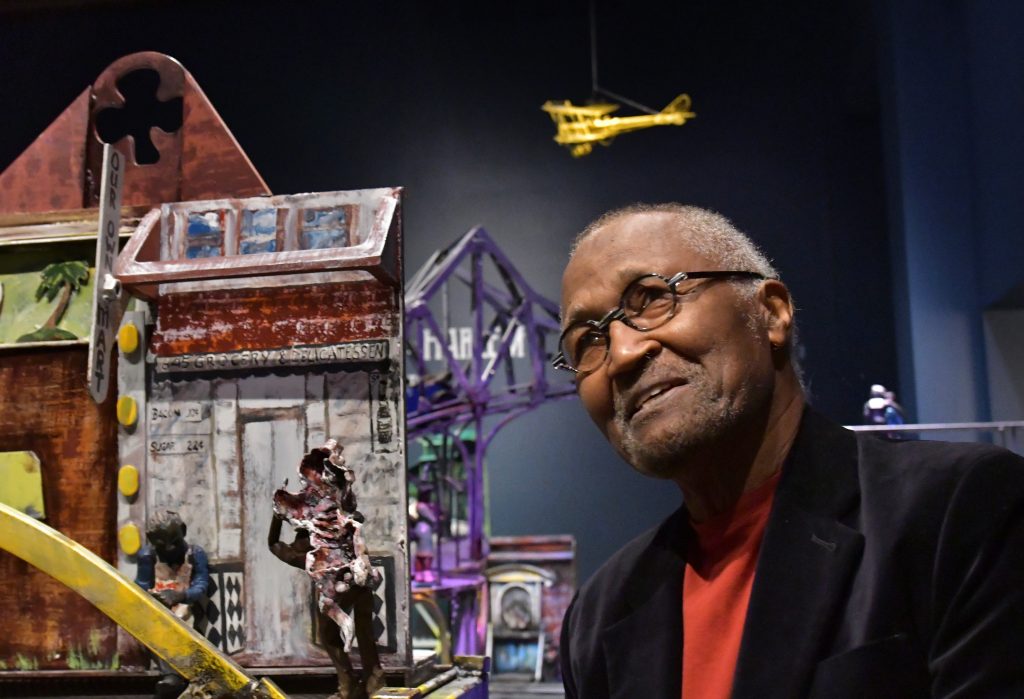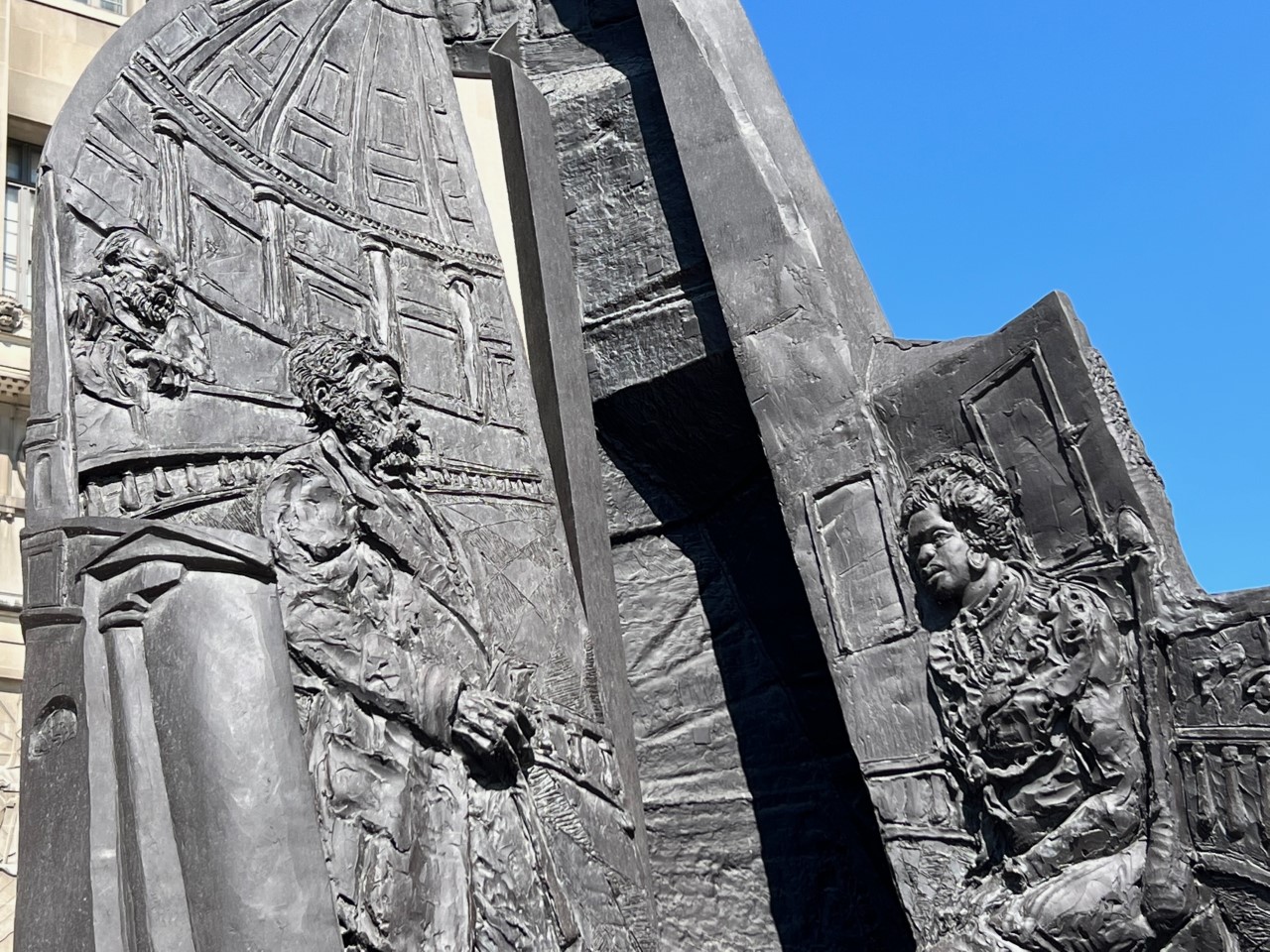Peorian Preston Jackson’s Freedom Suits Memorial reveals a chapter of St. Louis’ long-forgotten history.
As an artist, Preston Jackson has become a historian.
The Peoria sculptor and painter often strives not only for aesthetics, but meaning and truth—especially regarding civil rights. Even if painful, he says, the truth is important.
‘It’s all for the betterment… that we understand the truth.’—Artist Preston Jackson
“It’s all for the betterment—of womankind, mankind, human beings—that we understand the truth,” said Jackson, 78. “And my only tool—or my only weapon, if you want to call it that—is to put it on canvas or in bronze.”

That’s why he spent five years intensely working on an ambitious and impressive sculpture that was unveiled this summer in downtown St. Louis. It’s the Freedom Suits Memorial, dedicated to hundreds of slaves who went to court to try to win their freedom. Jackson is grateful for his role in shedding light on a brave and vital struggle that had gone largely unknown.
“I was very happy to be part of the discovery, something new in history,” he said.
For Jackson, history is a newer avocation. He never gave the subject much thought while growing up in Decatur with nine siblings.
As a young man, he was more interested playing guitar and creating art. After graduating in 1969 with a Bachelor of Fine Arts degree from Southern Illinois University, Jackson became an instructor in drawing and painting at Millikin University, then an art professor at Western Illinois University. In 1989, he joined the School of the Art Institute of Chicago as a professor of sculpture, serving as head of the Sculpture Department from 1994 to 1996.
Since 1995, he has owned The Raven Gallery in downtown Peoria, home of the Contemporary Art Center. His sculptures have been displayed throughout central Illinois and beyond. Among the most notable, “Bronzeville to Harlem: An American Story” is on permanent display at Peoria Riverfront Museum. In 1998, The Lincoln Academy of Illinois presented him with the Order of Lincoln, the state’s highest honor.
Over time, Jackson’s artworks increasingly became outlets for him to share history, particularly black history.
About 20 years ago, a clerk at the Civil Courts Building in downtown St. Louis found a stack of old boxes. They were stuffed with faded and deteriorated legal papers from the five decades before the Civil War. During that period, St. Louis underwent an economic explosion, fueled by steamboat traffic on the Mississippi River. There, as Missourians hotly debated the issue of slavery, you could find free blacks and slave blacks working almost side by side.

“This was a state, a particular region, that was very mixed at the time,” said David Mason, chief judge of the 22nd Judicial Circuit based in St. Louis. “There were a lot of free black people just wandering around St. Louis. The state of Missouri wasn’t sure where it was going to go in the Civil War. Some areas had a lot of freedom. Some areas had a lot of slavery. That was a real debate in Missouri.”
At the time, Missouri courts often abided by a legal concept known as “once free, always free.” A slave, if moved to a free state and then returned to a slave state, could sue for legal freedom. Those cases later would become known as “freedom suits.”
Between 1814 and 1860, at least 330 of these freedom suits were filed in St. Louis. After the recent discovery of those documents, Judge Mason—a descendant of slaves —pored over them with fascination, amazed at the bravery of the slave plaintiffs.
Between 1814 and 1860, at least 330 Freedom suits were filed and more than a third of the plaintiffs won.
“All of these cases were tried in front of all white, male jurors, who also were… property owners,” Mason said. “You would think that an enslaved person, a black person, suing a white slave owner for freedom would have great difficulty even getting in the courthouse door, much less convincing a jury.”
Yet more than a third of the plaintiffs won, include Dred Scott, who later would lose his freedom in an infamous decision by the U.S. Supreme Court. Otherwise, successful plaintiffs would leave the courthouse forever free.
Judge Mason—impressed as well with the fairness of the white judges and jurors—decided to spread the stories of the freedom suits.
“It became clear that there was an incredible story here to be told,” he said.
A steering committee was formed to raised $1 million in private money to build a plaza on empty land outside the courthouse, centered by a memorial to the freedom suits. Artists nationwide submitted ideas for a memorial sculpture. Attorney Paul Venker, who heads the committee, was floored by the proposal from Preston Jackson.
“In my view, Preston’s was head and shoulders above the rest,” Venker said. “His was such an in-depth approach to the topic, (one) I’ve been calling a dynamic visual narrative. It’s very rich with imagery. It’s very rich in storytelling.”
Jackson would need five years to put together the memorial, which stands 14 feet tall and consists of 85 separate pieces. The artwork depicts slaves at work, a slave auction, a steamboat and other vestiges of everyday St. Louis life before the Civil War. The focal point features a slave appearing in court before a white judge and white jurors. And the base is inscribed with the names of those hundreds of brave plaintiffs.
“We are enjoying the feeling that we get when we think about these courageous people,” Venker said. “But as Preston would say, ‘There’s ugly here.’ Slavery is still at the core of this memorial.”
The Freedom Suits Memorial and Freedom Plaza were dedicated this past summer. Now, fundraising continues, still shy about $150,000 from the goal. Supporters want to add a marker in the plaza to further explain the memorial, then perhaps add an interactive display inside the courthouse, perhaps narrated by Preston Jackson. He is always interested in spotlighting the truth, ugly or otherwise.
“If you dig deep enough, you find fascinating things,” Jackson said. “Wrong is wrong, good is good.”
For more on the Freedom Suits Memorial Project, visit The Bar Association of Metropolitan St. Louis.





